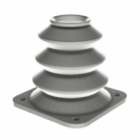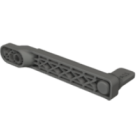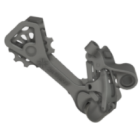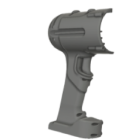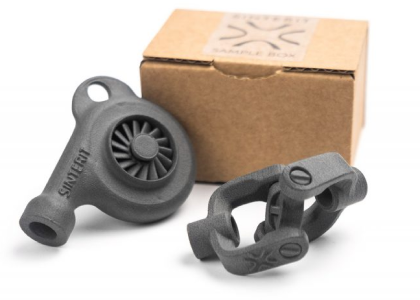3D printing issues
Even the most advanced 3D printers can occasionally produce unsatisfactory results. From poor surface quality to failed prints, these challenges are part of the learning curve for professionals and beginners alike. Understanding the most common 3D printing issues—and more importantly, how to solve them—is essential to consistently achieving high-quality results.
Why 3D printing problems happen
Additive manufacturing is an intricate process that involves precise movement, material behavior, heat control, and digital-to-physical conversion. Any inconsistency in those areas—be it in hardware, settings, slicing software, or material quality—can lead to defects. Problems often arise at the intersection of mechanical tolerances, thermal dynamics, and user input.
Some issues stem from the printer itself (calibration, maintenance), others from file preparation (model errors, slicing parameters), and many from material handling (moisture in filament or powder, for example). That’s why consistent process control is key to success in 3D printing.
Common 3D printing issues and their causes
Although specific problems vary by technology—FDM, SLA, SLS, or MJF—many share similar root causes. Here are a few of the most frequent challenges.
- Layer shifting – often caused by loose belts, stepper motor issues, or sudden movement during the print.
- Warping – when prints lift or curl at the edges, usually due to uneven cooling or poor bed adhesion.
- Under-extrusion – results in gaps between layers or weak parts, often related to clogged nozzles, low flow rates, or filament issues.
- Stringing and oozing – happens when material leaks during travel moves; typically solved with retraction settings.
- Surface roughness or zits – often a result of poor retraction tuning or incorrect temperature settings.
In SLS or MJF, you might instead see issues like incomplete fusion (due to incorrect energy input or agent dispersion) or warping due to uneven thermal distribution in the powder bed.
Diagnosing and solving print problems
Fixing print issues requires a structured approach. Start by identifying whether the problem is mechanical, software-related, or material-driven. Most slicing programs offer preview modes that help detect unsupported geometry, inconsistent wall thickness, or gaps in the model before printing begins.
Here’s a good rule of thumb: if it’s consistent across multiple jobs, check your hardware and settings. If it’s specific to one part, check your model and slicing parameters.
Don’t forget post-processing. Sometimes what looks like a printing error is simply a surface artifact that could be improved by sanding, vapor smoothing, or bead blasting—especially with FDM or SLS prints.
Building print reliability over time
Like any production method, 3D printing becomes more predictable with experience and data. Logging print parameters, analyzing failed parts, and sticking to consistent maintenance routines dramatically reduce variability. As your team becomes more familiar with the machine, materials, and design guidelines, issues become less frequent and easier to solve.
If you’re transitioning from occasional printing to more regular, application-critical use, consider using technology with built-in diagnostics, such as closed-loop powder control or onboard print monitoring systems. These features help reduce operator error and increase overall uptime.
Summary
3D printing issues are common — but manageable. Most problems stem from predictable sources and can be addressed with the right mix of knowledge, calibration, and attention to detail. Whether you’re running a single FDM printer or managing a fleet of SLS systems, a proactive approach to troubleshooting and process refinement ensures more consistent, high-quality results over time.
By understanding not just what went wrong but why, you’ll turn print failures into learning moments — and gradually build a far more reliable, cost-effective additive manufacturing workflow.
Explore also
- What is print 3D? Concept of 3D printing
- What does “3D printed” mean?
- Example of 3D printing
- How does 3D printing work?
- Slicing in 3D printing
- What do you need for 3D printing?
- 3D printing benefits
- Is 3D printer dangerous? Understanding the real risks
- 3D printing history
- 3D printing facts
Related categories




